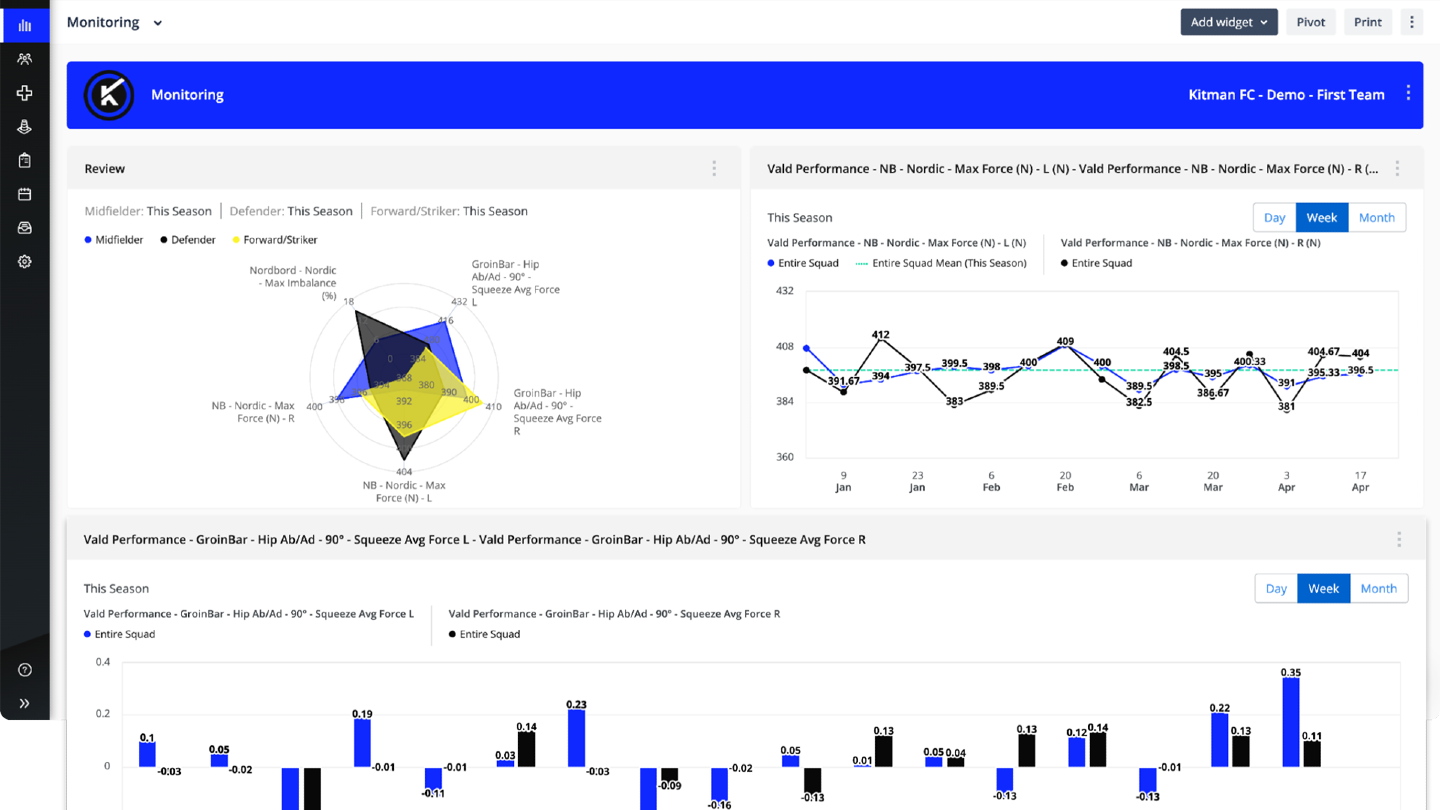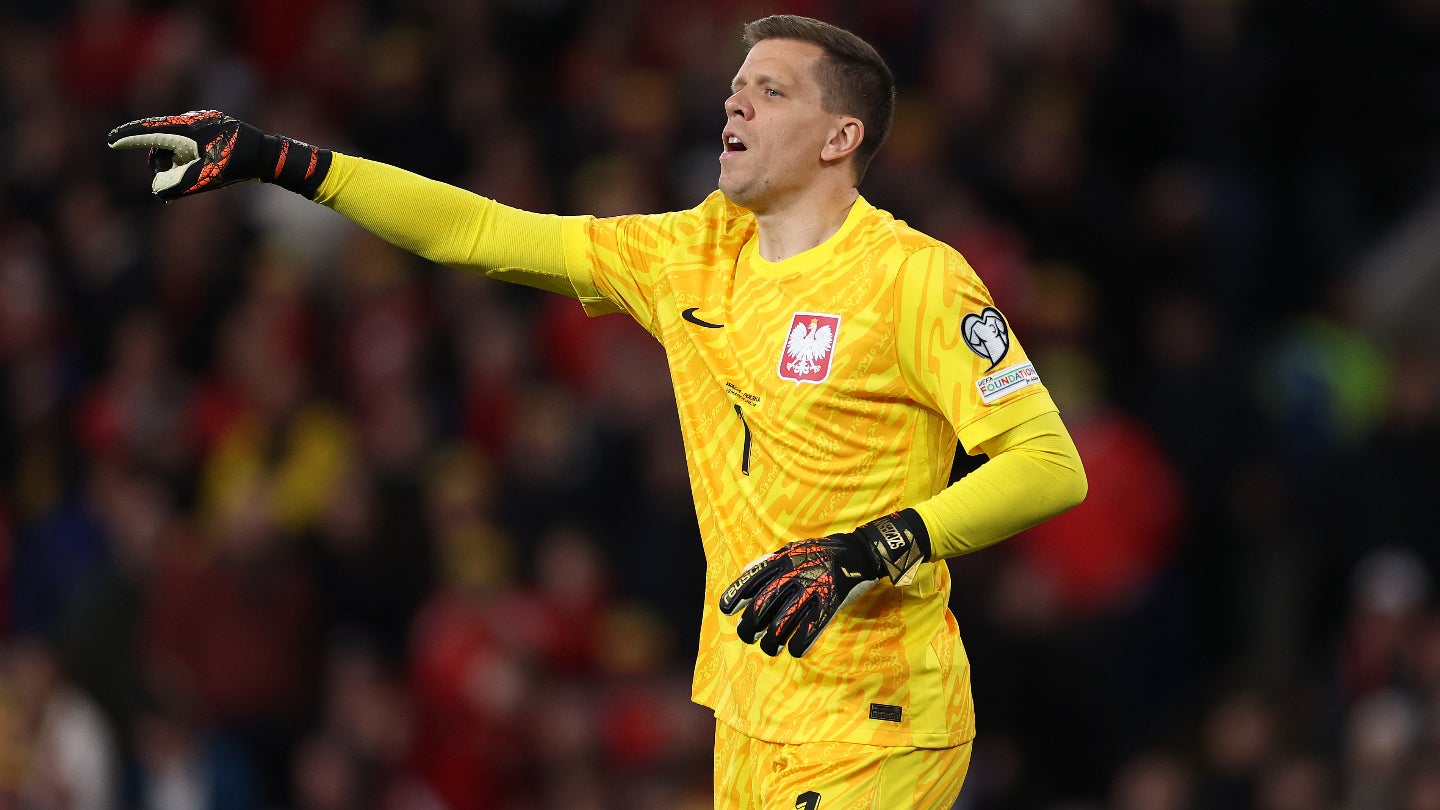As the financial stakes of global soccer rise year-on-year, the lengths teams will go to gain a competitive advantage over their rivals only grows too.
Companies such as Kitman Labs, which has operated as a data provider for teams such as German champions Bayer Leverkusen, English giants Chelsea, and Czech champions Sparta Prague, help clubs by providing data services so they can develop their playing staff and gain a leg up on their opponents.
Kitman Labs, in particular, is an official partner of the Premier League itself, providing a “Football Intelligence Platform” that all of the competition’s constituent clubs can draw from. The aim is to enhance the development of youth talent coming from English clubs’ youth academies by providing club data from the top level to the individual player level.
By growing the league’s talent pool, the partnership not only helps the clubs to grow competitively, but also gives the league a comparative advantage in the data industry over its rivals in the top tiers of Spanish, French, German, and Italian soccer.
As English clubs continue to perform well both domestically and in European competition, more attention, and thus more commercial spending, will be directed back towards the Premier League, highlighting the importance of investing in the on-field product and how it grows commercial viability.
Fulham (a partner of Kitman Labs in its own right) academy insight manager Tom Hounsell stated of the impact of Kitman Labs: “Our recent transition to the Kitman Labs Intelligence Platform has allowed us to continue to improve and manage the processes relating to the capture, cleaning, enrichment, and analysis of our football-related data. It’s continued to support our evolving commitments to interrogating data, interpreting results, and creating data-led insights and stories.”
Speaking to Sportcal (GlobalData Sport) Stephen Smith, Kitman Labs chief executive, explained how the company operates across different sports and sports organizations, its expansion goals, and the sports data industry layout.
Why are leagues such as the PL and clubs like Fulham and Gremio now looking to Kitman Labs to provide data solutions instead of doing so in-house?
“I think there are a couple of reasons. One, they are not software companies. These organizations are professional sports teams and professional sports leagues, that’s what they do best. It's not their core skill set or expertise and therefore they want somebody whose core skill set or competency is to come in and manage that, it would become an entirely new business line for these organizations and that’s a distraction from their core focus.
“Secondly, it's about size and scale - size really matters here. If an organization like Fulham or Gremio were going to go and do this, then they would have to hire 200 people. The reality is they’re not. Like most clubs that have tried to do this in-house, they’ll hire several developers to try and build on this, they’ll never get the same velocity as we’re getting and they realize after a couple of years that it's a waste of money and resources, so they turn to an organization like ours.”
How do Kitman Labs partners benefit, and what does your company gain?
“A platform that will help them collect and collate the data that is most important to them, week in and week out. Secondly, it will be configured in such a way that it’s meaningful for them and that’s done through a partnership that is led by a team of experts on our side who have walked the walk and been practitioners in elite and professional sports. It will help them to understand how to collect their information, what to do with it, and how to structure the platform to help them get the most out of it.
“Ultimately, what they are getting out of that is the ability to make better, more informed decisions, better understand their athletes, and enable their teams to be able to help themselves achieve their on-field and in-competition goals.
“In terms of what we get out of it, we get to continue to learn. We learn what they are trying to do and what they are trying to achieve. We learn about how to improve our products and our technology. We learn about where the market is heading. That allows us to do a better job and lean into solving the problems that the people using our platform are looking to address every day.”
What are the differences between the solutions you provide for clubs compared to leagues or governing bodies, as well as between sports?
“The core differences are based on essentially what a day in the life looks like in those organizations. The technology we’re providing for the leagues is generally what is required to operate the league and how to improve their standards. Whether that’s the standards of how coaching and development happens from a youth development perspective or a player health and safety perspective, or the types of data collected and standards that are applied to player health and wellness.
“For the teams, it's about creating a competitive edge - sometimes that's a competitive edge related to identifying talent, sometimes it's related to refining their programs such as understanding what’s working and what’s not with their youth development strategy. Sometimes it's refining their processes of improving player availability and ensuring they are getting more uptime from their athletes.
“Sometimes it's about performance optimization and how they are performing on the field. The core goal of a team is to win - our job in that scenario is to go in and support that. The core goal of the league is to advance the league, ensure its success, and safeguard its future success.
“What we’ve been focusing on is bringing together a lot of the information that has been collected to enable teams to support their own internal processes, which is the same types of data the league is trying to collect to safeguard the success of its competition. In a world where you have separate solutions and technology providers for the league and different ones for the teams, you are essentially asking the teams to collect the same information twice, to duplicate their processes which is extremely inefficient.
“What we’ve done is build a technology platform that allows both to coexist and allows them to collect the same types of information for different purposes, but to drive efficiency, allowing both sides to generate the intelligence they need from that information.”
In already boasting several high-profile partnerships across numerous different sports, what are Kitman Labs’ plans for further growth and expansion (e.g. new markets), if any?
“We’re constantly expanding our global footprint - in the last few months alone, we’ve announced deals with teams as far as Australia, New Zealand, and Japan, as well as territories like Brazil, Scandinavia, and even broader European markets. We’ve even recently announced our first deal with a Turkish team.
“We’re constantly looking at expansion, so we've brought on several world-class executives to our leadership team in the past year, who have grown international businesses successfully throughout the course of their careers. Part of their remit is to help us scale in other countries. We hope to continue the same expansion velocity over the next 12-24 months. Hopefully, you’ll see many new leagues and teams in many new regions for us.”
What is the future of data software solutions in the sports industry and does sports have a long way to go or is it a leader in such areas?
“The future is all based around the ability to generate intelligence, that’s why we’ve been building our company the way that we have. The future is not about data collection or databases, it's not about simplistic reporting or visualization. The future is about helping people to understand the information they are collecting and bringing all that information together to join the dots and understand what it means.
“The future is all about intelligence creation and the industry has an enormous way to go. I think we’re in the earliest stages of it within the field of sport and we’re excited to be playing a central figure in helping to drive that forward.”
What are the latest innovations in sports data and analysis that you see changing the industry?
“The culmination of what we've seen in the last 12 months in the emergence of biomechanical data from games and training is going to be transformational. Previously, data collection with teams was limited to using sensors to give us an X, Y, Z, which tells us something about what the athlete is doing, the amount of activity, and load, but it doesn’t tell us about how they are doing that and the quality of that movement.
“If we’re talking about in-game, it doesn’t tell us where they are looking, it's not telling us about specific aspects of skill performance or demonstration. What we’re starting to see is the biomechanical breakdown of that. Now we don’t just see what they’re doing but how they’re doing it, how they are interacting with other athletes, who they are looking at, what they’re seeing, and how much field of vision they have.
“We can understand so much more about every aspect of their play. We can see changes in their biomechanics that may lead to injury, we can see alterations in their biomechanics that can improve skill acquisition and execution. We will be able to see how work on the training ground is then translating into skill execution on the field and performance at a very intimate level. If we can get access to that level of biomechanical information and link that with player health information, training information, and scouting information, I think the potential use cases for that integrated data is pretty spectacular.
“On a separate note, the role of AI and machine learning will continue to evolve and adapt. There are two specific components - one pertains to improving the automation and efficiency of data collection and the other to the contextualization of data and data tagging. There's a huge opportunity to essentially remove a lot of the manual effort to contextualize data. I think AI can play an enormous role in tagging and contextualizing huge data sets.
“If you think about biomechanical data - if we’re collecting 20-30 skeletal locations on an athlete - we’re collecting those 50 times a second, over the course of the game, we’re talking about millions of data points before you even think about the activities they are performing. Today the amount of manual effort required to tag each aspect of the game, each aspect of somebody's movement so that the data or information can be understood is a huge burden. AI can play a big role in cleaning that up.
“I also think there’s an enormous opportunity for helping us to understand some of the bigger problems and the bigger use cases of that data where we want to use that information for talent identification, player health and safety issues, changes in biomechanics and how that impacts player health. We want to understand what specific aspects of coaching are resulting in the development or improvement of specific skill opportunities. There are big opportunities to see what’s really working based on the size of the data sets we’re dealing with - AI and machine learning can play a huge role in that as well.”
What are the future challenges and opportunities for the sports data industry and how well is Kitman prepared to push on relative to competitors?
“We’re the only company in our particular space that has been investing in data science and research for this number of years. We started the Performance Intelligence Research Initiative (PIRI) in 2019 and hired a data science team and research team to be able to come in to answer specific questions, to be able to start building tools to start leveraging the data we’re collecting, and help our teams to use that information in ways that pushed our organization forward.
“That’s given us a whole wealth of experience and knowledge of what organizations are trying to do to best process the data. It has allowed us to build our platform to be research-ready. We’re not just building a platform that will collect and store data in any way that we can, we understand the importance and significance of the context and structure of the data.
“It means that we’ve built our products very differently from anybody else to ensure that our team and league partners can leverage that data from day one to answer those most important and critical questions.”
















